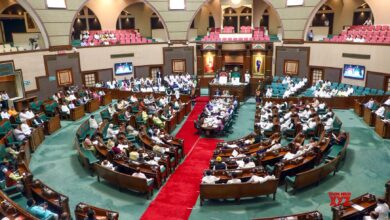India’s Shukrayaan will be launched in 2028: It will be a 4-year mission; it is the twin planet of Earth, one day is equal to 243 days of Earth

India’s first Venus mission will be launched in March 2028. The central government approved this mission on September 19. This mission will be of four years. Venus is about 40 million km away from Earth.
Venus is also called the twin planet of Earth. However, the day and night here are much longer than on Earth. Actually, Venus rotates very slowly on its axis. Because of this, one day on Venus is equal to 243 days on Earth.
What is Mission Venus? This mission of India will study the orbit of Venus. It will collect information about the planet’s surface, atmosphere, ionosphere (outer part of the atmosphere). Venus is close to the Sun (about 110 million kilometers). In such a situation, it will also find out what effect the Sun has on it.
3 reasons why studying Venus is important Venus is often called Earth’s twin because it is similar to Earth in terms of size and density. Therefore, studying Venus can help understand the evolution of Earth. It is believed that Venus also once had water, but now it has become a dry and dusty planet.
1. The temperature here is 462 degrees Celsius. The temperature of Venus’s surface is about 462 degrees Celsius. It is hotter than Mercury. Whereas Mercury is the closest planet to the Sun. The reason for Venus being hotter is the greenhouse effect. In this, when the heat of the Sun enters the atmosphere, it gets trapped there and does not go out of the atmosphere. This makes the surface of the planet hotter.
2. The lander could not work for more than 2 hours Due to the heat of Venus, the landers sent here till now have not been able to work for more than two hours. The pressure of its atmosphere is also much higher than that of the Earth. In simple terms, there is as much pressure here as is felt under the sea on Earth.
3. One rotation of Venus is equal to 243 days of Earth Venus rotates on its axis very slowly compared to Earth. One rotation of Venus is approximately equal to 243 days of Earth. Venus rotates on its axis in the opposite direction (east to west) compared to other planets. This means that on Venus the Sun rises in the west and sets in the east.
How will India go to Venus? India will launch the Venus mission in March 2028. Then it will be farthest from the Sun and closest to the Earth. If the launch is postponed at this time, the next chance will be in 2031 because then it will again be closest to the Earth.
The satellite will be launched from Earth. Upon reaching Earth orbit, it will rapidly move towards Venus. After the satellite exits Earth orbit, it will take about 140 days to reach Venus.
Will study Venus for four years The life of Venus mission will be four years. It is expected that Shukrayaan will be launched with GSLV Mark-2 rocket. Shukrayaan will weigh around 2500 kg. It will have payloads of 100 kg. The number of payloads will be decided later. However, payloads from Germany, Sweden, France and Russia can also be installed.





